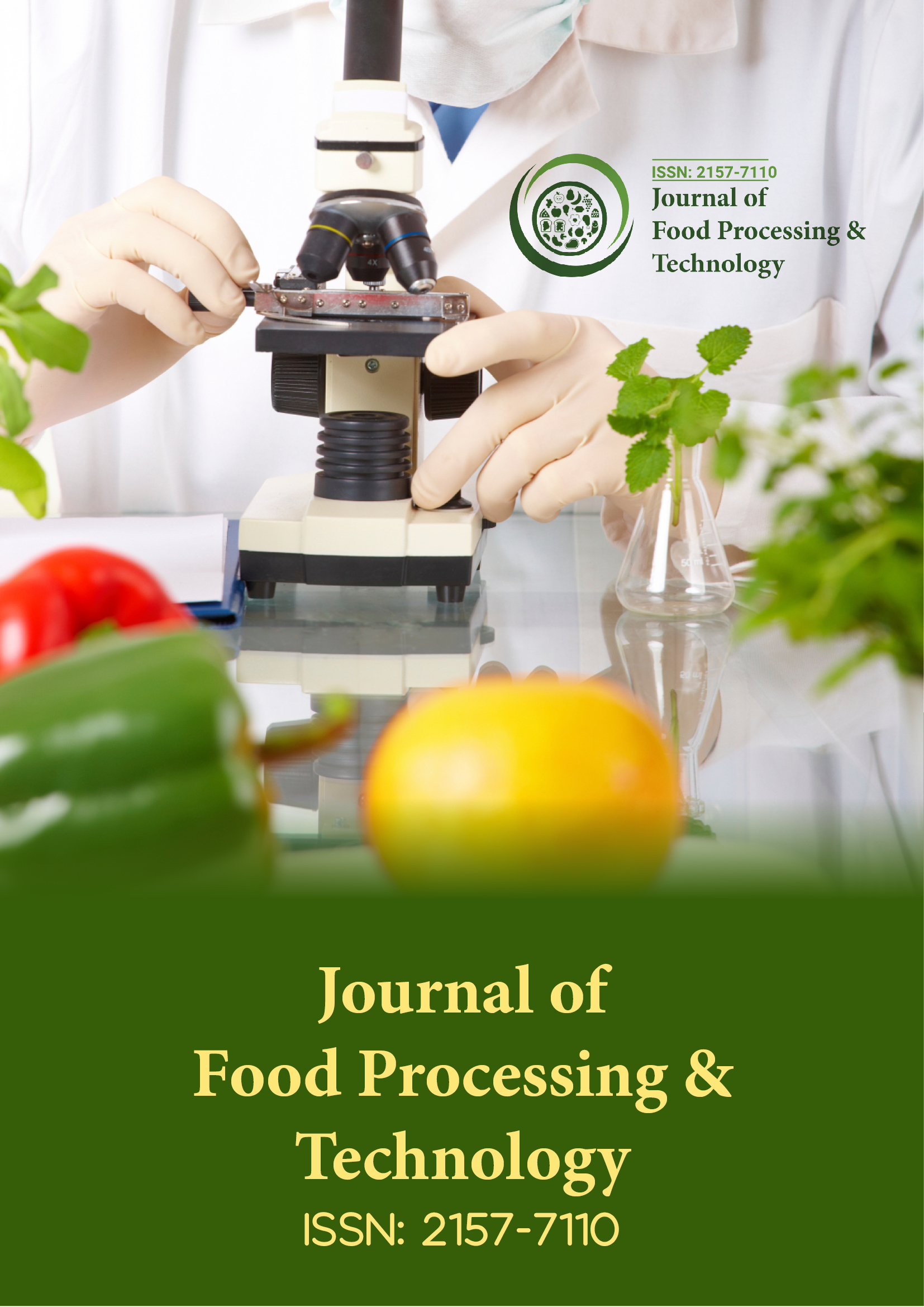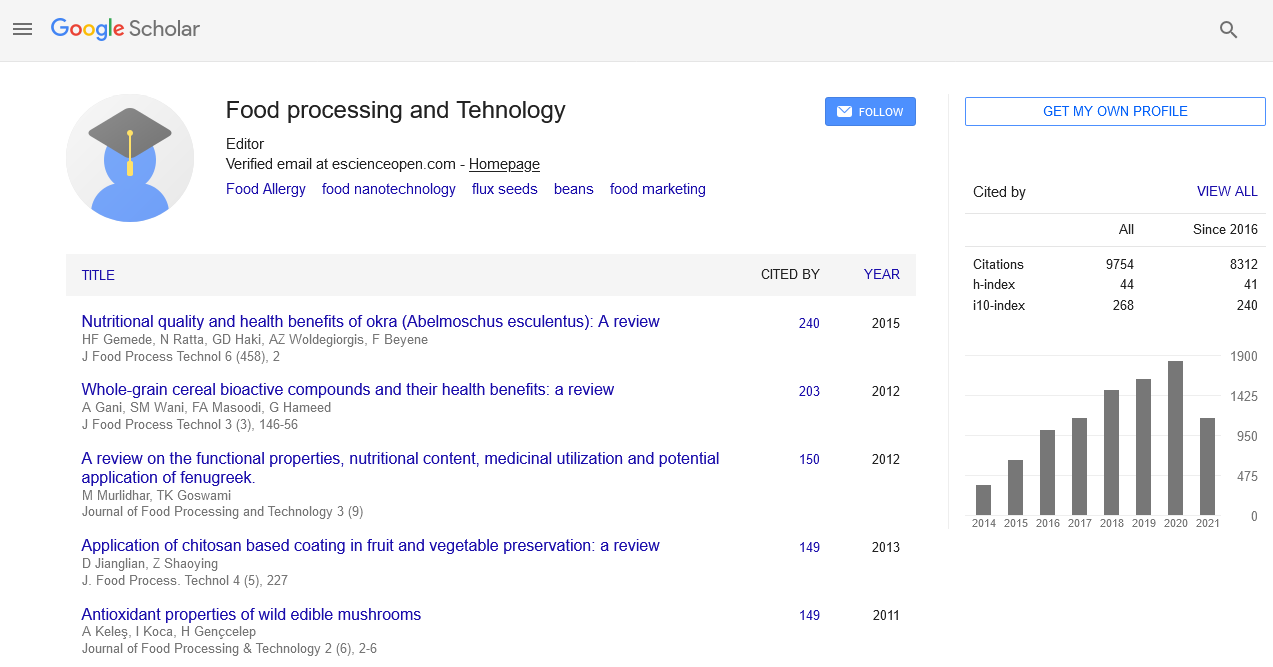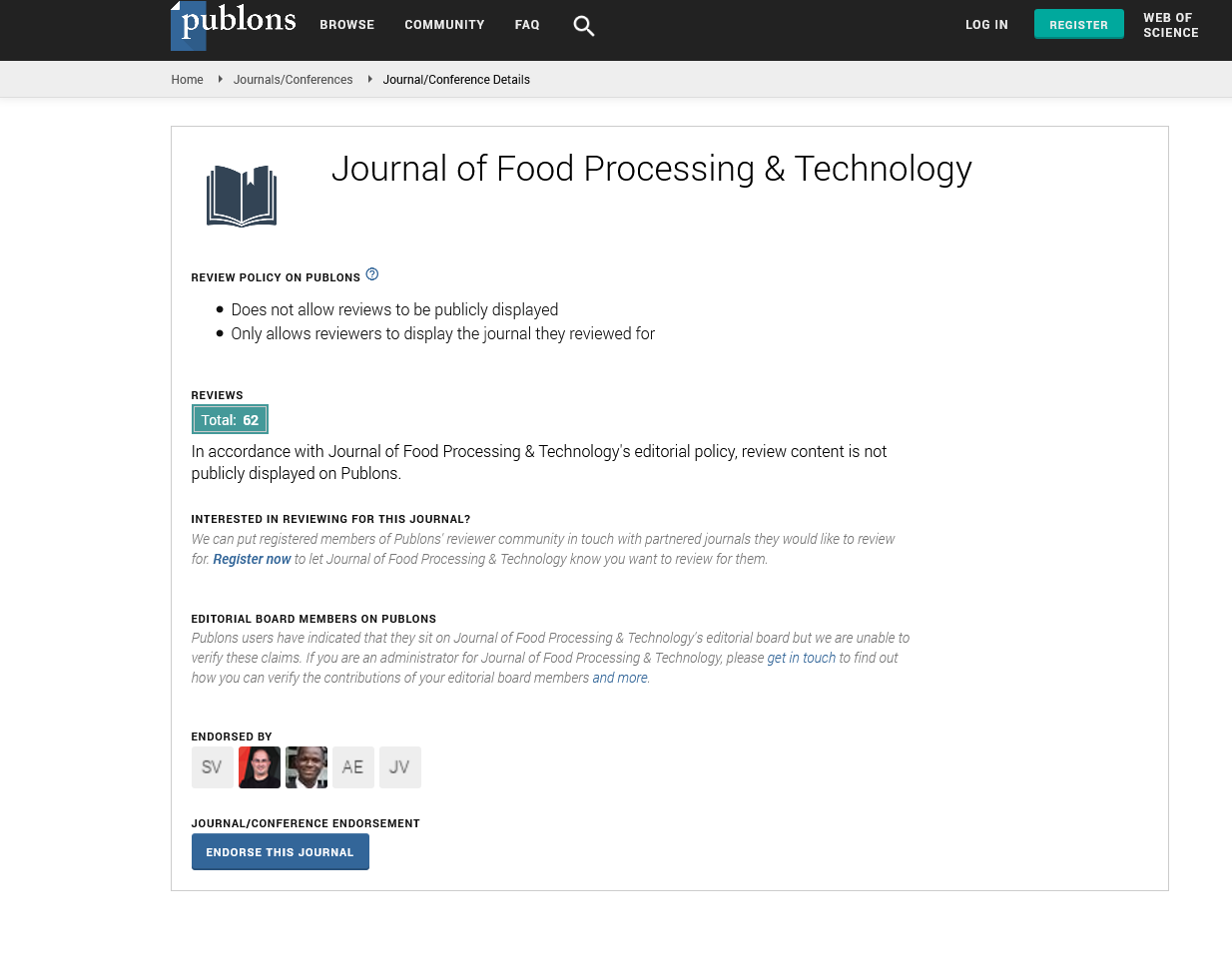Indexed In
- Genamics JournalSeek
- Academic Keys
- JournalTOCs
- China National Knowledge Infrastructure (CNKI)
- Access to Global Online Research in Agriculture (AGORA)
- Centre for Agriculture and Biosciences International (CABI)
- RefSeek
- Directory of Research Journal Indexing (DRJI)
- Hamdard University
- EBSCO A-Z
- OCLC- WorldCat
- Scholarsteer
- SWB online catalog
- Publons
- Euro Pub
- Google Scholar
Useful Links
Share This Page
Journal Flyer

Open Access Journals
- Agri and Aquaculture
- Biochemistry
- Bioinformatics & Systems Biology
- Business & Management
- Chemistry
- Clinical Sciences
- Engineering
- Food & Nutrition
- General Science
- Genetics & Molecular Biology
- Immunology & Microbiology
- Medical Sciences
- Neuroscience & Psychology
- Nursing & Health Care
- Pharmaceutical Sciences
Hue-change Based Lateral Flow Dipsticks for Visually Semi-quantitative Detection of Food Pathogens
6th International Conference on Food Technology and Nutrition
March 21-22, 2024 | Paris, France
Liu Wang
Zhejiang Academy of Agricultural Sciences, China
Scientific Tracks Abstracts: J Food Process Technol
Abstract:
Rapid detection of food pathogens is critical to ensuring food safety. The lateral flow assay (LFA) is widely utilized for this purpose, but traditional LFAs primarily use gold nanoparticles (AuNPs) as signal reporters, which limits naked-eye-based semi-quantitative detection. To address this, a hue-change-based LFA was developed, utilizing two types of fluorescent microspheres— red and green—as signal labels. Green fluorescent microspheres are pre-fixed on the test line (T-line), while red fluorescent microspheres are applied on the conjugate pad and captured by antibodies on the T-line via antigen-labeled ssDNA probes, changing the T-line emission from green to red. Specific gene sequences from target pathogens activate CRISPR/Cas12a, causing antigen-labeled ssDNA trans-cleavage so that red fluorescent microspheres are not captured on the T-line, resulting in green fluorescence. This hue shift on the T-line is proportional to ssDNA concentration, enabling semi-quantitative detection with greater visual sensitivity than AuNPsbased strips. When combined with recombinase polymerase amplification (RPA) and CRISPR/Cas12a, this method achieves sensitivity as low as a single copy of the invA gene from Salmonella, with semi-quantitative detection capabilities for Salmonella concentrations ranging from 0 to 4×10³ CFU. This user-friendly, equipment-free method is highly suitable for in-situ pathogen detection and can be adapted for food adulteration detection as well.
Biography :
Liu Wang is an associate researcher at the Institute of Agro-product Safety and Nutrition, Zhejiang Academy of Agricultural Sciences. She earned her bachelor's degree from Huazhong Agricultural University in 2012 and her Ph.D. from Zhejiang University in 2018. Her research focuses on developing rapid and convenient methods for detecting food pathogens. She has authored over 40 journal papers and holds six authorized patents.


